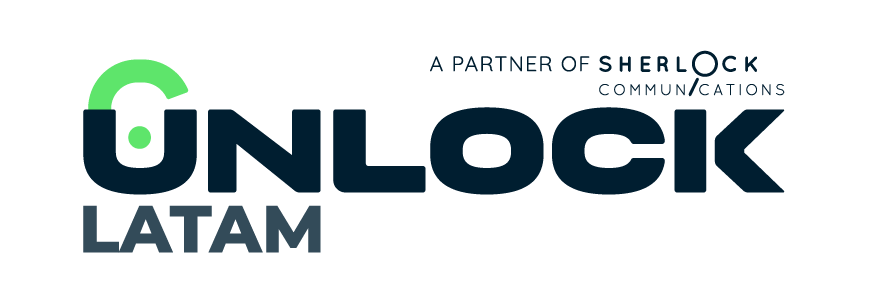Sales cadence: what it is and why a key strategy for growth
Intuition is not a good advisor when defining an effective marketing strategy. To take a business to another level and scale billing, we need to move away from any type of improvisation and overlapping roles to focus on each of the steps that take us to the desired destination. That’s what a “sales cadence” is about.
It is about focusing and structuring the effort When we become disordered, the resources allocated to networking, marketing, and sales are not used efficiently. There are overlaps, lack of follow-up, forgetfulness, and other problems that lead us to lose opportunities or erode the bond with the client. This is where a good sales cadence strategy adds value and makes a big difference.
What is a Sales Cadence and what are its advantages
Basically, a sales cadence is a structured, planned sequence of activities and communications that sales teams use to interact with prospects or potential customers.
By making it easier to track where we are in the sales or networking process, it allows us to quickly define the steps to follow day after day. In growth processes, disorder becomes a great threat to projects and it is essential to rely on methodologies that help us stay on track.
That’s why, in recent years, the “sales cadence” has established itself as a key strategy in the sales process, as it helps keep salespeople focused and organized, ensuring that they don’t miss important sales opportunities.
Because of the way it plans and structures processes, it is an important tool to help build solid business relationships, with medium and long-term perspectives.
Its results are usually fast and forceful both in the sales approach and in the use of resources allocated to the acquisition and conversion process. Whether you’re a team of one or 50, implementing a well-defined and structured sales cadence can make your prospecting process much more efficient and effective.
How to build sales cadence effectively
The primary goal of a sales cadence is to guide salespeople through an effective sales process, establishing contacts with prospects, nurturing those relationships, and moving toward a successful sales close.
By designing a clear and focused sequence, the return on investment improves considerably because everyone pays attention to their game. Sales cadences are scheduled for a fixed number of days and across a variety of channels (email, phone, social media), setting relationship-building and deal-closing goals for each person and stage.
Thanks to near real-time metrics and results tracking, we can continually evaluate the effectiveness of a sales cadence and make the necessary adjustments to improve conversion rates and sales performance.
Does it sound very technical? It’s simple: iImagine you have a five-step process that you can view in your CRM every day and, with a quick glance, clearly understand where you are with each customer. What’s more: you can evaluate the impact of your actions and understand where you tend to lose contact with your prospects, to implement changes that quickly overcome the problem.
Sales cadence tools
A typical sales cadence includes a series of steps or touchpoints with the prospect, which may include phone calls, emails, follow-up messages, social media messages, and other forms of communication.
These steps are scheduled on a specific calendar and are customized based on the prospect and their stage in the buying process.
In fact, the sales cadence strategy can be customized for different customer or prospect segments, allowing for more effective and relevant communication.
Some common components of a “sales cadence” include:
- Discovery calls: Initial phone calls are made to understand the prospect’s needs and challenges.
- Sending initial emails: Introductory or follow-up emails are sent after the initial call.
- Follow up and answer questions: Additional calls or emails are made to answer questions and provide additional information.
- Proposals and demos: If necessary, proposals and demos are scheduled to show how the product or service can solve the prospect’s problems.
- Closing sales: Closing the sale is actively sought, whether through a special offer, discount or incentive.
- Post-sale follow-up: After closing, follow-up continues to ensure customer satisfaction and foster long-term relationships.
Sales cadence: the best ally of scalability
Sometimes we can be successful with a less structured, more intuitive sales approach when we have one or two clients. But, when we start to enrich our portfolio and start working with five, ten or thirty clients at a time, expanding teams of salespeople and marketing managers, the process is likely to get messy.
This is where scalability collides with operational problems and we must find solutions that accompany the growth process. The reason is very simple: you can’t mentally keep track of where each customer is in your sales process or keep your sales strategy aligned on a small, unstructured team.
Therefore, having a clearly defined sales cadence organizes work and effectively solves the scalability problem.
Not only will you find it easier to organize and accomplish, but it will also be easier to recruit others to work with you.
A simple one-page flowchart is enough to illustrate to the new sales reps you hire the exact sales strategy you use, and they will be able to start making calls and interacting with customers right away.
Keys of a successful sales cadence
There are many secrets to how to create a sales cadence. Some of them are:
- Define clear and specific objectives: We often make the mistake of having broad sales objectives, such as increasing the number of qualified leads. Measuring and specifying the goals, defining the KPIs, is what makes a big difference.
- Structure the steps: It’s important to think about the smaller steps that lead to the point where your lead becomes a qualified lead. Every stretch of the journey counts. Nothing should be left to chance.
- Sales cadences vary greatly between individuals, teams, and organizations. However, the frequency, contact method and contact time are always structured and consistent. It’s that consistency that makes sales cadences so effective.
- Segment potential customers clearly: try to refine the segmentation and definition of your segments as much as you can. That helps personalize your sales cadences and the process becomes more efficient.
- Decide the communication channels for each segment: choose the ideal channels for the sales approach. While a cadence is typically multi-channel, you should adjust the approach to your specific customer. The more engaged your segment is with each channel, the more likely it will be effective as a whole.
- Focus on the channel that best supports your final commercial objective. An example? A sales cadence that includes TikTok messages can be great in B2C, but in a B2B business the best channel is usually LinkedIn.
- Create a sales cadence for each segment and be sure to communicate it clearly to the teams, emphasizing the importance of orderly and constant follow-up. The channel, the number of contact attempts, the time between each attempt, the moment for the next step, etc. must be defined.
- Every step of your sales cadence should connect with the right prospect at the right time and with the right content and the right storytelling.
- Automate where it makes sense: Look for automation opportunities as your base grows and your teams are forced to manage larger channels. The ideal is to detect if there is something that can be resolved with this type of tools in the different stages of the cadence.
- Data Driven: monitor, listen, understand and act. Customers give feedback all the time: each behavior sends us a message that we must interpret to adjust and improve the value proposition. To make your sales cadence more powerful, you’ll need to be specific.
Building relationships that close sales is not easy, but there are very good tools to rely on to achieve your objectives. Without a doubt, well-designed sales cadences provide a clear professional advantage.
Mastering Outbound Sales: Strategies for Predictable Revenue Growth
Mastering Outbound Sales: Strategies for Predictable Revenue Growth Nobody said it better than Aaron Ross, author of Predictable Revenue: “You want growth that doesn’t require guessing, hope, and frantic last-minute...
The Role of Sales Development Representatives (SDRs) in Predictable Revenue
The Role of Sales Development Representatives (SDRs) in Predictable Revenue Sales Development Representatives (SDRs) play a crucial role in the implementation of the "Predictable Revenue" framework, initially conceptualized by Aaron...
B2B prospecting: finding high-quality leads
B2B prospecting: finding high-quality leads Although there are very common concepts among those of us who work in different areas of marketing, more than once we take for granted that...



